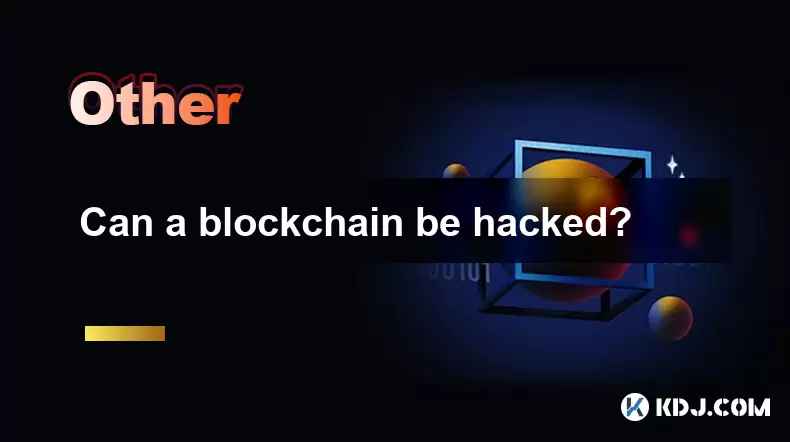-
 Bitcoin
Bitcoin $113600
-0.65% -
 Ethereum
Ethereum $3582
-2.02% -
 XRP
XRP $2.919
-4.02% -
 Tether USDt
Tether USDt $0.9999
-0.01% -
 BNB
BNB $749.8
-1.55% -
 Solana
Solana $162.1
-3.54% -
 USDC
USDC $0.9998
-0.01% -
 TRON
TRON $0.3318
-0.59% -
 Dogecoin
Dogecoin $0.1967
-4.77% -
 Cardano
Cardano $0.7148
-4.36% -
 Hyperliquid
Hyperliquid $37.30
-3.29% -
 Stellar
Stellar $0.3883
-4.29% -
 Sui
Sui $3.357
-4.00% -
 Bitcoin Cash
Bitcoin Cash $556.3
-1.84% -
 Chainlink
Chainlink $16.11
-4.08% -
 Hedera
Hedera $0.2344
-4.30% -
 Ethena USDe
Ethena USDe $1.001
0.00% -
 Avalanche
Avalanche $21.68
-4.66% -
 Litecoin
Litecoin $118.0
-3.37% -
 UNUS SED LEO
UNUS SED LEO $9.000
0.53% -
 Toncoin
Toncoin $3.161
-6.14% -
 Shiba Inu
Shiba Inu $0.00001193
-3.33% -
 Uniswap
Uniswap $9.434
-3.85% -
 Polkadot
Polkadot $3.577
-2.49% -
 Dai
Dai $0.9999
0.00% -
 Monero
Monero $288.7
-3.86% -
 Bitget Token
Bitget Token $4.209
-3.61% -
 Cronos
Cronos $0.1368
-1.06% -
 Pepe
Pepe $0.00001003
-4.60% -
 Aave
Aave $252.2
-3.73%
What can a blockchain browser check? A practical function guide
A blockchain browser lets users explore transactions, blocks, and wallet addresses to verify cryptocurrency transfers and smart contract interactions in real time.
Jun 20, 2025 at 07:35 pm

Understanding the Role of a Blockchain Browser
A blockchain browser serves as a powerful tool for anyone interacting with blockchain networks. It allows users to explore, verify, and analyze data stored on the blockchain in real time. Unlike traditional ledgers or databases that are centralized, blockchains are decentralized and publicly accessible. This means that all transactions and data entries can be viewed by anyone using a blockchain explorer. Whether you're sending cryptocurrency, participating in a smart contract, or verifying token transfers, a blockchain browser provides transparency and trust in digital interactions.
The primary function of a blockchain browser is to allow users to search for blocks, transactions, and wallet addresses. Each transaction recorded on the blockchain is immutable, meaning it cannot be altered once confirmed. This immutability ensures security and integrity across the network. By utilizing a blockchain browser, individuals can independently confirm transaction details without relying on third-party services.
Checking Transaction Details and Status
One of the most common uses of a blockchain browser is to check the status and details of a transaction. When you send or receive cryptocurrency, the transaction is broadcasted to the network and eventually included in a block. Using the transaction hash (a unique identifier), you can input this into a blockchain browser to retrieve detailed information.
- Transaction hash: A unique alphanumeric string representing a specific transaction.
- Sender and receiver addresses: The public keys used to identify the parties involved in the transaction.
- Amount transferred: The exact quantity of cryptocurrency sent from one address to another.
- Number of confirmations: Indicates how many blocks have been added after the block containing your transaction, enhancing its validity.
- Timestamp: The exact date and time when the transaction was processed.
This level of detail helps users verify whether their funds have been successfully sent or received. It also aids in troubleshooting failed or delayed transactions.
Exploring Block Information
Each blockchain consists of multiple blocks linked together in chronological order. A blockchain browser enables users to examine individual blocks and understand their structure and contents. When viewing a specific block, you can see:
- Block height: Refers to the position of the block within the chain.
- Timestamp: When the block was mined or validated.
- Miner/validator address: The entity responsible for creating the block.
- Number of transactions: How many transactions were included in the block.
- Block size and weight: Indicate the data capacity used by the block.
These insights are particularly useful for developers, researchers, and analysts who study blockchain behavior and performance. They can assess network congestion, validate mining rewards, and track historical data trends.
Verifying Smart Contracts and Token Transfers
For platforms like Ethereum and Binance Smart Chain, blockchain browsers support the inspection of smart contracts and associated token movements. If you interact with a decentralized application (dApp) or participate in a token sale, you can use the blockchain browser to:
- Verify contract execution: Check if a smart contract was successfully triggered.
- Track internal transactions: View token transfers that occur within a contract execution.
- Review contract code: Some explorers allow users to read and audit the source code of deployed contracts.
- Monitor token balances: See how many tokens an address holds after a transfer.
This functionality enhances transparency and accountability in the decentralized finance (DeFi) ecosystem. Users can ensure that their assets are properly accounted for and that contract logic behaves as expected.
Investigating Wallet Addresses and Balances
Blockchain browsers provide a way to look up wallet addresses and their corresponding balances. By entering a public address, you can view:
- Total balance: The current amount of cryptocurrency held by the address.
- Transaction history: A list of all incoming and outgoing transactions associated with the address.
- Token holdings: For multi-token wallets, you can see which ERC-20 or BEP-20 tokens are owned.
- Smart contract interactions: Any dApp activities or contract calls made from the address.
This feature is especially helpful for tracking payments, auditing financial records, and ensuring accountability in business or personal transactions.
Frequently Asked Questions
Q1: Can I check multiple transactions at once using a blockchain browser?
Most blockchain browsers do not support batch querying of transactions directly. However, some advanced tools and APIs allow developers to automate checks for multiple hashes or addresses through scripting or integration.
Q2: Why does a transaction show "pending" for a long time?
A pending transaction usually indicates that it hasn't been picked up by miners or validators yet. This can happen due to low gas fees, network congestion, or incorrect transaction parameters.
Q3: Is it possible to trace the origin of stolen cryptocurrency through a blockchain browser?
While blockchain browsers can track the flow of funds, tracing stolen assets often requires cooperation from law enforcement and analysis tools beyond basic explorers. Pseudonymity features may also obscure the identity behind addresses.
Q4: Do all cryptocurrencies have dedicated blockchain browsers?
Most major cryptocurrencies like Bitcoin, Ethereum, and Litecoin have well-developed explorers. Smaller or newer projects may not offer robust exploration tools, but open-source solutions can sometimes be adapted for this purpose.
Disclaimer:info@kdj.com
The information provided is not trading advice. kdj.com does not assume any responsibility for any investments made based on the information provided in this article. Cryptocurrencies are highly volatile and it is highly recommended that you invest with caution after thorough research!
If you believe that the content used on this website infringes your copyright, please contact us immediately (info@kdj.com) and we will delete it promptly.
- DeriW Mainnet: Zero Gas Fees Revolutionize On-Chain Derivatives Trading
- 2025-08-06 10:30:11
- IOTA, Cloud Mining, and Eco-Friendly Crypto: A New York Investor's Take
- 2025-08-06 10:30:11
- Kaspa (KAS) Price Prediction: August 6 - Will It Break Free?
- 2025-08-06 10:50:12
- Meme Coin Mania: Arctic Pablo's Token Burn Ignites Presale Frenzy
- 2025-08-06 10:50:12
- Pi Network, Holders, and Market Turbulence: Navigating the Crypto Storm
- 2025-08-06 10:55:12
- XRP, DOGE, and the Altcoin Darling Dilemma: Where's the Alpha?
- 2025-08-06 08:30:11
Related knowledge

What is the purpose of a nonce in mining?
Aug 04,2025 at 05:56pm
Understanding the Role of a Nonce in Cryptocurrency MiningIn the world of cryptocurrency mining, the term nonce stands for 'number used only once.' Th...

Can data on a blockchain be deleted?
Aug 05,2025 at 04:00am
Understanding Blockchain ImmutabilityThe core principle behind most blockchain systems is immutability, which means that once data is recorded onto th...

What is the difference between on-chain and off-chain transactions?
Aug 02,2025 at 04:22pm
Understanding On-Chain TransactionsOn-chain transactions refer to digital asset transfers that are recorded directly on a blockchain ledger. These tra...

How are blocks linked together?
Aug 04,2025 at 06:56am
Understanding the Structure of a BlockchainA blockchain is a decentralized digital ledger composed of a sequence of blocks, each containing a list of ...

Can a blockchain be hacked?
Aug 05,2025 at 08:29am
Understanding Blockchain Architecture and Security PrinciplesBlockchain technology is built on a decentralized and distributed ledger system that reco...

What is a node's role in a blockchain network?
Aug 03,2025 at 03:16pm
Understanding the Function of a Node in a Blockchain NetworkA node is a fundamental component of any blockchain network, acting as a participant that ...

What is the purpose of a nonce in mining?
Aug 04,2025 at 05:56pm
Understanding the Role of a Nonce in Cryptocurrency MiningIn the world of cryptocurrency mining, the term nonce stands for 'number used only once.' Th...

Can data on a blockchain be deleted?
Aug 05,2025 at 04:00am
Understanding Blockchain ImmutabilityThe core principle behind most blockchain systems is immutability, which means that once data is recorded onto th...

What is the difference between on-chain and off-chain transactions?
Aug 02,2025 at 04:22pm
Understanding On-Chain TransactionsOn-chain transactions refer to digital asset transfers that are recorded directly on a blockchain ledger. These tra...

How are blocks linked together?
Aug 04,2025 at 06:56am
Understanding the Structure of a BlockchainA blockchain is a decentralized digital ledger composed of a sequence of blocks, each containing a list of ...

Can a blockchain be hacked?
Aug 05,2025 at 08:29am
Understanding Blockchain Architecture and Security PrinciplesBlockchain technology is built on a decentralized and distributed ledger system that reco...

What is a node's role in a blockchain network?
Aug 03,2025 at 03:16pm
Understanding the Function of a Node in a Blockchain NetworkA node is a fundamental component of any blockchain network, acting as a participant that ...
See all articles

























































































